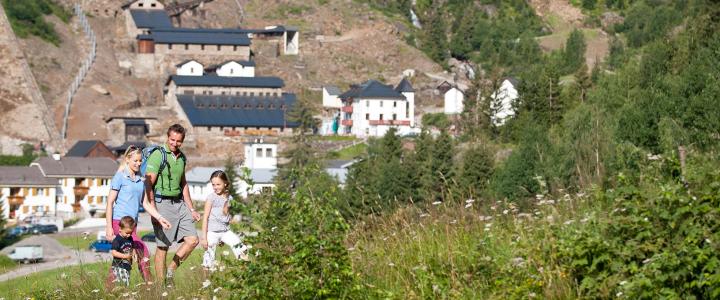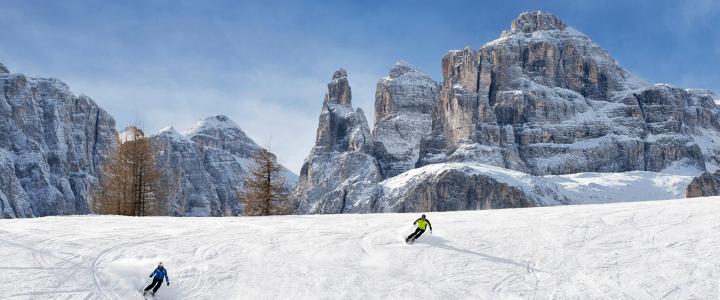The Eisack / Isarco Valley connects the Brenner / Brennero Pass to Bolzano / Bozen, making it one of the most important transport routes in Europe.
This ancient north-south transit route across the Alps has had a major influence upon the valley. Besides bringing it economic prosperity, it has given it especially much cultural wealth. Those who view the Eisack / Isarco Valley as only a transit route fail to recognize that it is also one of the topographically and culturally most-interesting Alpine valleys – indeed, one of the most beautiful holiday regions in Europe as a whole. A region that is always worth a trip and that offers everything, from active sports to culinary treats!
The valley is about 80 km long and has an altitude of about 300 to 1,374 meters above sea-level at the Brenner / Brenner Pass and more than 3,500 meters at the highest peaks of the surrounding mountains. The Eisack / Isarco Valley is a beautiful landscape full of contrasts. Vacationers looking for variety and diversity, individuality, and new perspectives will find that this is the ideal place to spend their holidays!
On the upper reaches of the valley, the Eisack / Isarco River is still narrow and flanked by the majestic peaks of the Stubai Alps and Ziller Valley Alps. The main town of the Wipp / Vipiteno Valley, as the Eisack / Isarco Valley is also called here, is Sterzing / Vipiteno. The Fugger town once flourished as an administrative center of the entire mining industry in the region, and the extraction of metals from the ground was the main industry even into the 20th Century. Today, Sterzing / Vipiteno is a charming little town with a beautiful medieval center. The Wipp / Vipiteno Valley with its romantic side valleys – the Ratschings / Racines Valley, the Pflersch / Fleres Valley, and the Pfitsch / Vizze Valley – is a ski and cross-country skiing paradise. The ski resorts of Rosskopf / Monte Cavallo, Gossensass / Colle Isarco – Ladurns and Ratschings / Racines – Jaufen / Valgiovo as well as the Ridnaun / Ridanna Cross-Country Skiing Center offer plenty of winter fun. And in summer, the Alpine valleys are a wonderful playground for hiking, mountain climbing, rock climbing and mountainbiking. The fantastic Schneeberg / Monteneve World of Mining in the Ridnaun / Ridanna Valley still recalls the area's great mining past.

Below Sterzing / Vipiteno, the mountains edge even closer to the Eisack / Isarco River. On one ravine north of Brixen / Bressanone, the massive Fortezza / Fortezza guards the route over the Brenner / Brennero Pass. This fortress of the early 19th Century – which became outdated and lost all military value almost immediately after its construction – is an impressive and popular tourist destination even today. Here, near the Sciaves / Sciaves, the beautiful Pusteria Valley branches towards the east. At the foot of the high-altitude plateau of Natz-Schabs / Naz-Sciaves, the magnificent Neustift / Novacella Monastery is nestled in the landscape.
Still farther downstream lies the Bishop's city of Brixen / Bressanone, with its famous cathedral, the Hofburg, and the romantic old part of town. Here the valley widens, and chestnuts groves and vines now cover the slopes. For centuries, developed and well-groomed landscapes dominated the region, and the influence of mild Mediterranean climate is already quite palpable.
The tranquil resorts, Feldthurns / Velturno, Villanders / Villandro, or Barbian / Barbiano are usually at sunny locations a little above the valley floor. Directly on the Eisack / Isarco River, the artist town of Klausen / Chiusa – which is also known as "Törggele Capital of South Tyrol" (the term "törggele" refers to a local custom of visiting multiple inns for hearty snacks and New Wine) – can be found. High above Klausen / Chiusa, the Monastery of Säben / Sabiona – once a bishop's residence and today a still much visited place of pilgrimage – towers in serene splendor. The many fortresses and castles on both sides of the valley attest to the importance of trade routes that led along here.

To the east, one finds two very popular holiday destinations, the Villnöss / Funes Valley and the Val Gardena / Gardena Valley. The "Pale Mountains" – i.e. the Dolomites –flank the Eisack / Isarco River here, while the impressive Schlern / Sciliar Massif looms over the valley with its mighty cliffs like a giant fortress. Across from it, the Ritten / Renon marks the last narrow spot before the valley opens up into the Bolzano / Bozen Basin.